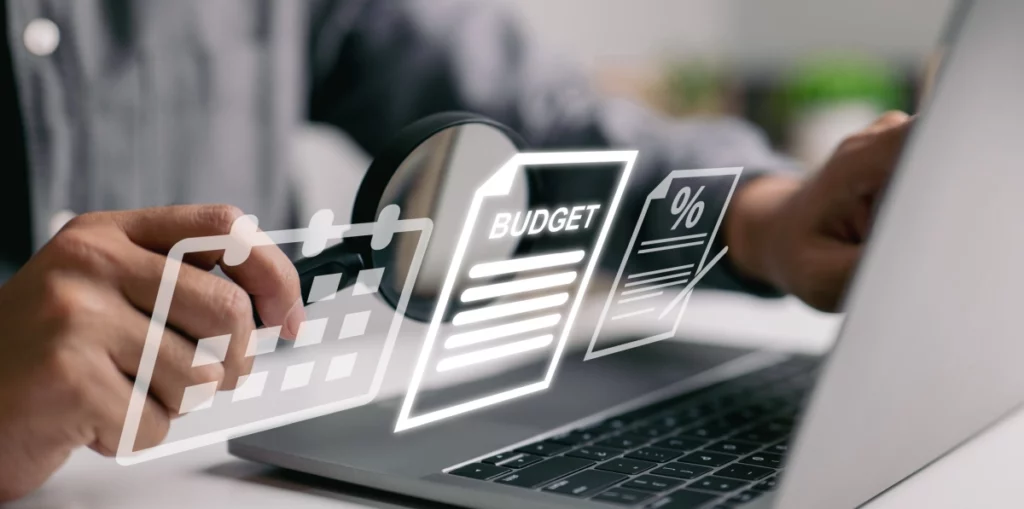IT leaders understand their role is crucial to driving business success. Yet, despite driving digital transformation, operational efficiency, and innovation, IT is still too often viewed as a cost center rather than a value driver. If CIOs don’t own the financial story, someone else will.
With IT budgets remaining flat or increasing slightly, CIOs face immense pressure to optimize spending without compromising service quality or innovation. A strategic approach to IT asset utilization, supported by robust software asset management (SAM) solutions, can help CIOs turn visibility into actionable budget wins.
According to Gartner, Inc.’s latest forecast, worldwide IT spending is expected to reach $5.61 trillion in 2025, an increase of 9.8% from 2024. Half of IT professionals reported wasteful IT spending as a significant challenge in their organizations.
CIOs need to balance the demands of digital transformation, cybersecurity, and operational efficiency. Smart use of IT assets is the key to achieving that balance. With clear visibility into all IT assets —hardware, software, and SaaS—CIOs can identify underutilized assets, eliminate redundancies, and make better business decisions that align technology spending with business goals.
Let’s review this CIO’s utilization playbook to understand how they can leverage IT visibility to drive budget wins.
Experience EZO AssetSonar's capabilities firsthand.
The hidden costs of IT blind spots
In today’s fast-paced digital landscape, IT departments often juggle hundreds, or even thousands, of assets—hardware, software, cloud services, SaaS platforms, and more. However, many companies lack complete visibility into their IT infrastructure, leading to significant hidden costs of IT assets.
These blind spots can severely impact both operational efficiency and financial health. Below are the primary challenges that arise when organizations are not fully aware of what assets they own, how they’re being used, and where there’s waste:
Tech sprawl and shadow IT
The challenge
One of the most prevalent issues caused by a lack of visibility into IT assets is tech sprawl, in which departments or individuals within the organization independently procure and use technology tools without IT oversight. This often leads to Shadow IT, where employees use unauthorized software or apps that have not been vetted or approved by the IT team. While these tools may be intended to improve productivity, they often lead to overlapping software solutions, resulting in unnecessary redundancies.
The cost
Without centralized oversight, organizations may end up paying for multiple tools that serve the same function—whether project management software, collaboration platforms, or even SaaS accounting tools. These untracked tools can quickly add up, leading to redundant subscriptions and an inflated software budget. Additionally, managing multiple vendors and licenses for the same or similar services becomes inefficient, leading to wasted resources.
Consider this example
A global company discovered that several departments had purchased their own project management tools without consulting IT. As a result, the company was paying for three different tools that more or less performed the same functions. Later, they went on to consolidate to a single tool, saving approximately $200,000 annually.
Underutilized licenses
The challenge
Underutilization of assets—especially software licenses and hardware—is another hidden cost when IT visibility is lacking. For example, businesses may purchase software licenses based on the number of employees, but not all employees need access to that software. Alternatively, equipment may be left idle due to poor planning or resource allocation, resulting in waste.
The cost
Without proper tracking and optimization of licenses and hardware, companies continue to pay for software that goes unused or underused. In some cases, software might be over-licensed (for example, you pay for 50 licenses when only 30 users actually need it). Similarly, equipment or devices might be left unused due to inefficiency, yet maintenance costs and operational overheads remain the same.
Consider this example
A mid-market company operating several remote teams realized they had been paying for 50 unused project management tool licenses. After conducting a license audit using a centralized software asset management solution, they reclaimed those licenses and saved $150,000 per year in subscription costs alone.
Compliance risks
The challenge
Compliance with software licensing agreements is crucial to avoid legal and financial risks. However, without adequate visibility into software usage and license expiry dates, organizations risk being non-compliant with vendor agreements. When companies fail to manage software renewals, track who is using which license, and monitor license usage, they may unintentionally violate licensing terms.
The cost
Failing to maintain compliance can lead to costly audits and fines. Many software vendors, such as Microsoft, Adobe, and Oracle, conduct regular audits and impose hefty penalties for non-compliance, especially if it is found that the company is using unlicensed or over-licensed software. In some cases, the fines can exceed the cost of the software itself. Moreover, businesses can face reputational damage that undermines trust with clients, investors, and regulatory bodies.
Consider this example
A company that failed to track the use of its enterprise software licenses was caught in a vendor audit that revealed overuse of licenses. The company was required to pay $400,000 in back fees to cover the violation, along with additional legal and administrative costs. This could have been avoided with better visibility and license tracking.
Case study (BDS saves costs and enhances IT management with AssetSonar)
The challenge
BDS, a provider of advanced document management solutions, was struggling with IT asset tracking across a growing remote workforce. Using spreadsheets led to siloed information and human error, making it challenging to manage asset location, condition, and usage. They needed a more scalable, automated system.
The solution
In 2020, Sunny Singh, IT Director, implemented EZO AssetSonar to streamline IT asset management. The platform provided:
- Centralized tracking of laptops, peripherals, and IT assets across remote locations.
- Real-time visibility into asset status, location, and lifecycle for better forecasting and budgeting.
- Seamless integration with Zendesk, linking IT service management to asset tracking, making issue resolution faster and more efficient.
The outcome
- Better asset lifecycle management: AssetSonar helped BDS track assets nearing end-of-life, improving budget forecasting and avoiding unexpected procurement costs.
- Informed decision-making: Real-time insights allowed for efficient resource allocation, ensuring the right devices were available at the right locations.
- Streamlined IT workflows: The Zendesk integration provided clear visibility into asset service history, preventing recurring issues.
- Efficient remote management: With 22 remote locations tracked, BDS easily managed onboarding, offboarding, and asset returns.
- Customizable reporting: AssetSonar’s custom field tracking helped Sunny forecast asset needs, ensuring smooth operations.
Conclusion
AssetSonar enabled BDS to optimize asset management, reduce unnecessary costs, and improve operational efficiency, making it a vital tool for scaling their remote operations. Read the full case study here.

Building a utilization-driven IT strategy
Implementing a strategic approach to IT asset management involves several key components:
1. Asset discovery
Utilizing tools to automatically discover and catalog all IT assets is crucial. According to Gartner, organizations that implement automated asset discovery can reduce security breaches by 30%. These tools provide real-time visibility into all assets, including hardware, software, and cloud resources, ensuring nothing goes unnoticed.
According to IBM’s latest Cost of a Data Breach Report, companies with a solid plan for handling security incidents — especially those that know exactly what assets they have — can cut data breach costs by 61%, saving about $2.6 million compared to the global average.
2. Usage monitoring
Continuously tracking how assets are used across departments helps in identifying underutilized resources. A recent report suggests that organizations can save approximately 30% per asset in their first year of implementing an ITAM program. Monitoring usage patterns allows for better allocation and optimization of resources.
A statistic shows that 30% of software licenses are never used, and another 8% are rarely used (less than once a month).
3. Lifecycle management
Managing assets from procurement through to retirement ensures maximum value. A structured IT asset management lifecycle makes sure that every configuration item (CI) has a name, a purpose, and a plan. A report on cloud monitoring states that 87% of organizations say poor asset visibility increases security risk. Proper lifecycle management helps reduce risks and improve decision-making.
E-waste is increasingly becoming a global problem. The Global E-Waste Monitor 2024 reports that only 22.3% of electronic waste was properly recycled in 2022. Organizations need to take responsibility by reusing, refurbishing, and recycling equipment to reduce environmental impact.
4. Role-based policies
Tailoring asset usage policies to different departments prevents misuse and ensures compliance. Implementing Role-Based Access Control (RBAC) can transform chaotic permission structures into a streamlined security architecture. According to a report, 70% of organizations use RBAC to manage user permissions across IT systems, underscoring its importance in cybersecurity frameworks.
Leveraging data for strategic budgeting
Implementing a data-driven approach enables CIOs to optimize IT spending and align resources with organizational goals. Here’s how:
Cost allocation
Assigning costs to specific departments or projects ensures accurate budgeting and accountability. For instance, Coca-Cola allocates shared costs, such as IT services and administrative expenses, to individual departments based on their usage, ensuring each segment accurately reflects the costs incurred.
Predictive analytics
Using historical data to forecast future IT needs and expenses enables proactive planning. Fintech companies integrated predictive analytics to automate payment predictions and optimize resource allocation, resulting in improved forecast accuracy and enhanced strategic decision-making.
ROI measurement
Evaluating the return on investment (ROI) for each IT asset helps organizations make smarter future purchasing decisions. This involves tracking both quantitative metrics—such as time or cost savings—and qualitative factors, such as user satisfaction and productivity gains, to clearly demonstrate the asset’s overall value to the business.
Scenario planning
Running “what-if” analyses helps understand the financial impact of different asset utilization strategies. United Utilities employed scenario planning to rapidly generate alternative investment plans, stress-test assumptions, and explore various scenarios, enabling evidence-based decision-making for their asset investment strategy.

The role of software asset management (SAM) in budget optimization
Several software asset management (SAM) solutions play a key role in budget optimization. A robust software asset Management solution like EZO AssetSonar plays a critical role in optimizing IT budgets by streamlining the management of software assets. Here’s how SAM drives budget optimization:
1. Centralized management
A unified platform to track all software assets and licenses ensures that all software is accounted for in one place. With a software asset management solution, IT teams can easily maintain an accurate inventory of all software, reducing the risk of missed renewals, over-purchasing, or compliance violations. Centralized management helps eliminate duplication, ensure optimal resource use, and provide a clear overview of the organization’s software footprint.
2. Compliance assurance
Ensuring all software usage aligns with licensing agreements is essential to avoid costly penalties. SAM tools help automate compliance checks by monitoring software usage against license agreements. This allows organizations to stay compliant with industry regulations and licensing terms, mitigating risks associated with software audits and potential fines. With real-time visibility into license usage, businesses can ensure that their software portfolio remains compliant and up to date.
3. Cost savings
One of the most significant benefits of SAM is the ability to identify and eliminate unused or underused software licenses. Software asset management tools track software usage, helping businesses pinpoint underutilized licenses. By eliminating wasteful spending on unused or redundant software, companies can significantly reduce their IT budgets, freeing up resources for more critical investments.
4. Vendor management
Effective SAM helps streamline vendor contracts and negotiations by providing insights into actual software usage and license needs. A software asset management tool enables IT teams to review vendor agreements and adjust software procurement strategies to secure better pricing, terms, and renewals. By optimizing vendor relationships, organizations can negotiate more favorable terms, such as volume discounts or flexible license agreements, ultimately reducing costs.
5. Integration with SAM tools
Software asset management tools like EZO AssetSonar offer real-time visibility into software usage, automate compliance checks, and provide actionable insights to optimize software spending. The integration with other systems, such as procurement and IT service management platforms, further enhances its ability to deliver end-to-end management of software assets. By using a SAM tool, organizations can continuously monitor software performance, track spending trends, and ensure that software investments deliver maximum value. The result is a more streamlined, cost-effective IT environment that supports long-term business growth.
Real-world applications and success stories
Organizations have achieved significant savings through effective asset utilization:
Case Study 1: A government agency avoided a $1M audit penalty by implementing proactive license tracking
A U.S. healthcare organization proactively addressed software license compliance gaps using automated monitoring tools, preventing a potential $1.5 million penalty during a vendor audit.
Case Study 2: Biotech company saves $3.8M through smarter equipment utilization
A biotech company based in Boston improved visibility of its equipment usage and avoided unnecessary purchases. They realized savings of US $3.8 million in one year, including avoiding new CapEx and selling underused assets.
Case Study 3: Canadian municipalities cut costs through better asset planning
A study of municipalities in Canada found that creating a detailed asset registry and planning long-term capital strategies helped reduce downtime, allocate resources more effectively, and deliver cost savings.

Overcoming challenges in asset utilization
CIOs face several challenges in maximizing asset utilization, but with strategic planning and software asset management tools, these challenges can be overcome effectively.
Data silos
Challenge: Disparate systems can lead to fragmented views of IT assets, making it difficult to optimize usage.
Solution: By integrating various asset management systems into a single platform, CIOs can achieve a unified view of all IT assets, ensuring better tracking and utilization. This will eventually help organizations eliminate data silos.
Employee resistance
Challenge: Employees may resist adopting new asset management systems due to unfamiliarity or a lack of understanding.
Solution: CIOs should focus on educating employees about the benefits of asset utilization and how it helps optimize resources for the entire organization.
Budget constraints
Challenge: Allocating resources for asset management solutions when financial pressure exists.
Solution: CIOs can prioritize asset management tools that deliver long-term value, such as those that save on operational costs and increase efficiency.
Change management
Challenge: Transitioning from an existing strategy to a new utilization-focused approach can cause disruptions.
Solution: Effective communication, phased implementation, and clear roles and responsibilities are key to ensuring a smooth transition.
CIOs can ensure their organizations get the most value from their IT assets while minimizing costs by addressing these challenges with the right tools and strategy.
Turn visibility into budget wins with EZO AssetSonar
Implementing EZO AssetSonar for enhanced visibility
EZO AssetSonar is an all-encompassing solution designed to provide CIOs with complete control over their IT assets, ensuring better management, compliance, and cost optimization.
Watch this video to understand why IT teams need EZO AssetSonar:
Now, let’s understand how EZO AssetSonar can enhance asset visibility and utilization:
Unified dashboard
EZO AssetSonar provides a centralized, real-time dashboard that enables CIOs to monitor all IT assets across the organization. This unified interface offers instant access to asset status, location, and utilization metrics, enabling informed decision-making and faster response times to asset-related issues.
Automated discovery
With EZO AssetSonar’s automated discovery capabilities, CIOs can automatically detect and catalog both hardware and software assets across the organization. This process eliminates the need for manual tracking and reduces human error, making asset management more efficient and accurate.
Usage analytics
EZO AssetSonar provides in-depth usage analytics that reveal how and when assets are being used across various departments. These insights help CIOs identify underutilized assets and make data-driven decisions to optimize resource allocation, ensuring assets are deployed where they add the most value.
Compliance tracking
EZO AssetSonar’s compliance-tracking features provide automated alerts for upcoming license expirations and usage anomalies. These proactive notifications help prevent compliance issues and penalties, ensuring the organization remains aligned with licensing agreements and regulatory requirements.
Cost optimization
EZO AssetSonar plays a pivotal role in cost optimization by identifying underutilized assets that can either be reallocated to different departments or retired to free up budget. By streamlining asset use and eliminating waste, CIOs can achieve significant cost savings that can then be reinvested in more critical areas of the business.
Note: Visibility is the first step for CIOs who aim to transform IT into a strategic enabler. By implementing robust asset management practices and leveraging tools like EZO AssetSonar, CIOs can turn data into decisions that drive budget optimization, enhance compliance, and align technology investments with business objectives.











